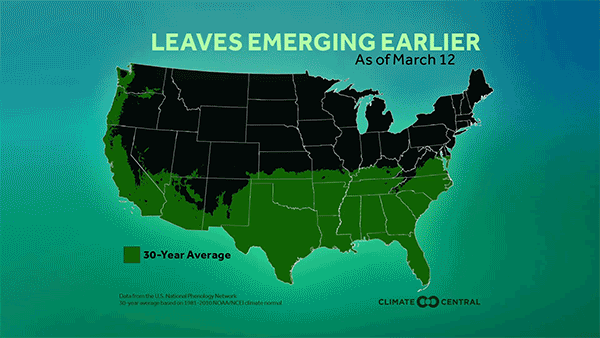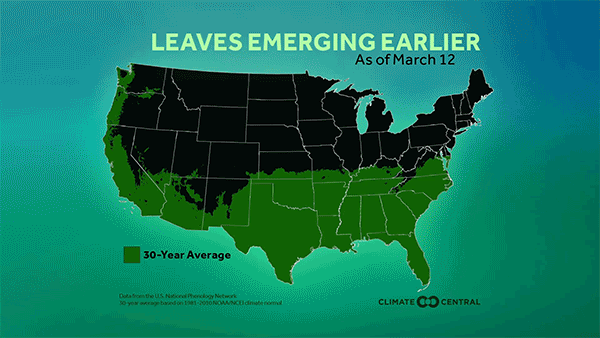


The large winter storm and hard freeze that have followed the very warm February in the Northeast provide a vivid example of a weather one-two punch that may become more common in the future. Spring, as measured by the appearance of the first leaves on trees, is arriving sooner than in the past as the planet continues to warm from greenhouse gases. This is especially visible this year, as the U.S. had its second warmest February on record, causing an early appearance from daffodils and fruit trees. The emergence of first leaves is, on average nationally, three days earlier than it was 30 years ago. If current greenhouse gas emission rates continue, the resulting warming is projected to move the first leaf appearance 13 days earlier by 2050 and as much as 3 weeks earlier by 2100.
The earlier spring arrival increases the risk to agriculture and gardening, as the premature emergence of buds and leaves gives them more of a chance to be damaged from a frost or freeze during the first part of the spring. In addition, early blooms and leaves may emerge before migrating pollinators, such as bees and birds, return for the season, further stressing agriculture.
If you would like local early spring trends for your specific state, you can find them here>>
Observational data are gathered from the United States Phenology Network. This year’s first leaf is compared to the 1981-2010 climatological normal. Observed data are through March 12. Projection data (second study) are compared to springs based on the 1961-90 climatological normal.

